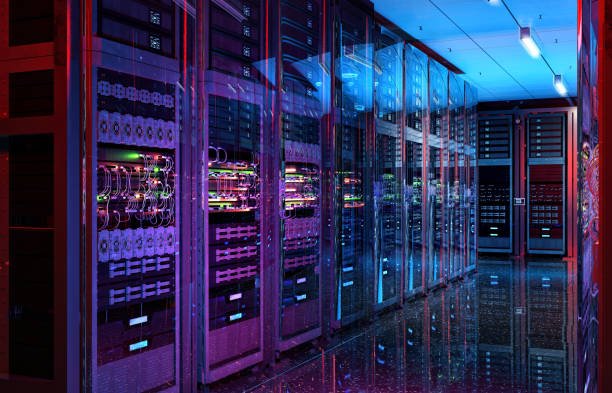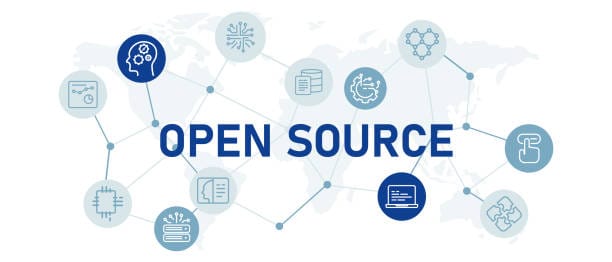Somewhere, a child stares out a classroom window at a sky streaked with the pinks and oranges of sunrise. It’s a beautiful sight, but in the back of her mind, she knows the colors sometimes glow brighter because of pollutants suspended in the air. She’s heard adults whisper the words “climate change” like a prayer or a curse. She’s learned phrases like “carbon emissions” and “global warming.” She’s seen pictures of polar bears adrift on melting ice.
She’s growing up in the Age of Uneasy Realizations. The age when human beings can no longer pretend that the planet’s resources are endless. The age when rivers run dry, storms swell into monsters, and fires devour forests with a ferocity that seems almost conscious. The age when the consequences of industrial progress have come knocking, demanding payment for centuries of unchecked consumption.
It’s not that humanity didn’t know. Scientists have been warning of this moment for decades. But knowledge, it turns out, is a curious thing. It can exist alongside denial, separated by the thin membrane of convenience and habit. For a long time, people nodded solemnly about “the environment,” and then continued living as if the Earth would quietly absorb our waste forever.
But the membrane has burst. The reality is here, immediate and unignorable. People are talking about Green Technology not because it’s fashionable, but because it’s becoming essential. The world has entered a period of reckoning—and possibly, of redemption.
From Coal Dust to Clean Air
The story of human civilization is inextricably tied to our mastery of energy. Once, it was fire, flickering in caves and forests. Then coal, black as night, fueled the rise of empires. Steam locomotives shrieked across continents. Chimneys belched smoke into soot-choked skies. Progress thundered forward, oblivious to the price.
The Industrial Revolution was glorious and monstrous in equal measure. It lifted millions out of poverty, lengthened lifespans, and unleashed invention upon invention. But it also wrapped cities in smog, poisoned rivers, and pumped carbon into the atmosphere at levels unseen in Earth’s history.
Oil followed coal, slick and seductive, driving cars, ships, and planes. Gasoline gave us freedom to roam vast highways. Plastic molded the shape of modern life. Natural gas arrived as a “cleaner” fossil fuel, but it too carried its share of consequences.
By the time the 21st century dawned, the scale of human influence on the climate was impossible to ignore. Global temperatures were rising. Ice caps were shrinking. Coral reefs were bleaching to bone-white ghosts. Extreme weather events—droughts, hurricanes, floods—became more frequent and savage.
Green technology didn’t emerge out of nowhere. It arrived as a counter-narrative to a system teetering on the brink of ecological collapse. It was the promise of progress without poison, of prosperity without plunder. It was an idea that whispered, “We can still thrive—just differently.”
The Spirit of Reinvention
One reason everyone’s talking about green technology is because, in a strange twist of fate, humanity’s addiction to innovation might now save us from our addiction to fossil fuels.
Humans are restless creatures. We build. We invent. We dream up gadgets and software, vehicles and skyscrapers, biotech and artificial intelligence. Our ingenuity is relentless. And that same spirit of reinvention has turned toward healing the damage we’ve done.
Engineers, scientists, entrepreneurs, and ordinary citizens are asking new questions: How can we produce energy without belching carbon into the sky? How can we build cities that sip electricity rather than guzzle it? How can we transform waste into fuel, pollution into product, emissions into opportunity?
Green technology is not a single invention or industry. It’s a kaleidoscope of solutions spinning out from the same desperate question: How do we sustain civilization without destroying the planet?
Solar panels shimmer atop suburban roofs, converting sunlight into power silently, without flames or fumes. Wind turbines spread their white arms across hillsides, harvesting invisible gusts. Electric cars glide through city streets, humming quietly, leaving only tire whispers in their wake. Batteries store the sun’s energy for midnight’s darkness. Architects dream of skyscrapers covered in vertical gardens. Startups test ways to capture carbon from the air and lock it underground or turn it into stone.
These are not distant dreams. They are happening now. And the pace is quickening because humanity senses that time is running out.
An Economic Earthquake
There’s another reason the conversation about green technology is growing louder: money. The green revolution isn’t just about saving polar bears or protecting rainforests. It’s about massive economic transformation.
For decades, fossil fuels underpinned the global economy. Oil-rich nations wielded geopolitical power. Energy companies ranked among the world’s most profitable corporations. Jobs, politics, and entire national identities revolved around coal mines, oil rigs, and refineries.
But now, the economic winds are shifting. Investors once wary of “eco-friendly” companies are pouring trillions into green technologies. Governments are crafting policies that penalize carbon emissions and reward sustainability. Consumers, especially younger generations, are demanding products and services that tread lightly on the Earth.
In the boardrooms of multinationals, the phrase “net-zero” has become a mantra. Corporations are pledging to eliminate or offset their carbon emissions. Companies once synonymous with oil—like BP and Shell—are rebranding themselves as “energy companies” rather than oil giants, investing billions in renewables.
The International Energy Agency declared that the pathway to net-zero requires investment in green energy to triple by the end of this decade. Economists predict that the clean energy sector could become the dominant force in the global economy, dwarfing fossil fuels in both profits and jobs.
This is no gentle shift. It’s an economic earthquake. Entire industries will vanish or be reborn. New ones will emerge. The transition will be messy, uneven, and politically fraught. But it is underway, and no country or company can afford to ignore it.
Green technology isn’t just about sustainability. It’s about survival—economic, political, and ecological.
A Generation Demands Better
Another reason the conversation refuses to fade is that a new generation has come of age with climate change as their inherited burden. For millennials and Gen Z, rising seas and raging wildfires are not abstract future threats. They are lived realities.
These young people are angry—and determined. They march in streets. They organize protests. They skip school to demand climate action. They crowd social media with viral hashtags, pushing corporations and politicians to act.
They are also the world’s future workforce and consumer base. Companies ignore them at their peril. Businesses that fail to adapt to sustainable practices risk becoming irrelevant. Political leaders who downplay environmental threats find themselves facing voters who refuse to accept inaction.
Young activists like Greta Thunberg have become global icons, channeling fury and hope in equal measure. But beyond the headlines, millions of ordinary young people are choosing careers in green engineering, environmental science, sustainable architecture, and ecological policy. They’re building apps to track carbon footprints. Designing new materials to replace plastic. Innovating circular economy models where waste becomes raw material for something else.
They are transforming the conversation about green technology from something “nice to have” into something necessary. For them, sustainability is not a luxury—it’s non-negotiable.
Cities as Engines of Change
Another pulse in the green technology story beats within the world’s cities. Over half of humanity lives in urban areas, and by 2050, that figure will climb even higher. Cities are paradoxical creatures: vibrant hubs of culture and commerce, yet ravenous consumers of energy and resources.
Urban planners are racing to redefine how cities work. Skyscrapers are being clad in solar glass that generates electricity. Smart sensors monitor air quality, traffic flows, and water leaks. Electric buses glide through streets powered by clean grids. Green roofs cool buildings and soak up rainwater. Wastewater is recycled into drinking water.
The concept of the “15-minute city,” where every essential service is reachable within a short walk or bike ride, is gaining traction worldwide. Cities like Paris and Barcelona are aggressively reclaiming streets from cars, transforming asphalt into parks and bike lanes.
These urban experiments are not purely ecological. They’re social, economic, and deeply human. Clean air means healthier lungs. Green spaces reduce stress and improve mental health. Efficient public transit makes life less costly and more equitable.
As mayors and city councils embrace green technologies, urban centers become test labs for a sustainable future. What succeeds in Copenhagen or Singapore may soon appear in New York, Mumbai, or Lagos. Cities, once symbols of pollution, are becoming engines of ecological reinvention.
Technology Meets Ancient Wisdom
Though the phrase “green technology” conjures images of silicon chips and space-age materials, it also has roots in something far older: the ancient knowledge of how to live in harmony with nature.
Indigenous communities across the world have long practiced sustainable forestry, agriculture, and resource management. Their relationship with the land is not extractive but reciprocal. They understand that rivers must remain clean, forests unbroken, and animals plentiful—not simply for spiritual reasons, but for survival.
Modern scientists and engineers are increasingly recognizing the value of this wisdom. Architects draw inspiration from termite mounds to design buildings with natural ventilation. Engineers study the structure of leaves to create efficient solar panels. Farmers are reviving traditional methods like crop rotation, agroforestry, and soil regeneration.
Green technology is not purely about inventing new machines. It’s also about rediscovering ways of living that respect ecological boundaries. The marriage of high-tech solutions and ancient knowledge may prove the most powerful innovation of all.
A Narrative of Hope
Why is everyone talking about green technology? Because in an age of grim headlines and existential fears, it offers a narrative of hope. It is the story of human resilience—the idea that we are clever enough, determined enough, and compassionate enough to correct our course.
It’s not naïve optimism. The scale of the crisis is vast, and progress often feels agonizingly slow. Fossil fuel interests remain powerful. Political divisions paralyze action. Greenwashing abounds, with corporations slapping eco-friendly labels on harmful practices. The transition will not be painless.
Yet the fact that green technology is now a central global conversation is itself astonishing. A decade ago, clean energy was a niche concern. Today it’s the subject of presidential debates, corporate annual reports, and dinner-table conversations. The change in public awareness has been seismic.
This conversation matters because it shapes the decisions of governments, businesses, and individuals. It determines whether humanity will merely survive the coming decades—or build a flourishing, sustainable civilization.






